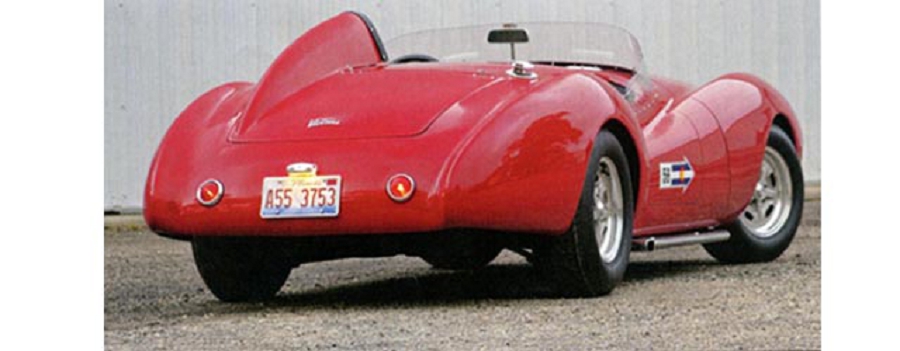
Back in May 2011 (was it that long ago?) Daniel Strohl of Hemmings Motor News featured a great story on Steve Steers Victress S1A special in “Hemmings Muscle Machines“.
The story was called “The 58th Variety” and Dan has given us permission to run the story here on Forgotten Fiberglass. Thanks Dan! Let’s have a look at what Dan had to say about Steve’s “ground pounding” special.
Feature Article from Hemmings Muscle Machines
May, 2011 – Words and Photography by Daniel Strohl
Steve Steers looked up.
On a simple frame of two-by-fours hung from the rafters of the Texas garage sat the fiberglass body he had come all the way from Illinois to see. Apparently, nobody had ever finished it in the nearly 50 years since it popped from its mold.
One of the doors and the trunklid even remained intact, uncut from the one-piece body. This was as close a starting point as he could share with his father, his inspiration and motivation.
“Because of Pop, I always knew about fiberglass-bodied sports cars growing up, and I’ve always been enamored and interested in them,” Steve said. John Steers, like many backyard tinkerers and builders of the 1950s who were both in love with the European sports cars streaming into the United States and frustrated at the lack of a decent response from Detroit, believed he could build a car that could outperform them all without breaking the bank.
His first attempt, in the late 1940s, used the basic chassis of a Ford Model A, but with the seat just behind the front axle, the engine in the back and a body made of doped fabric. In 1954, he began work on a second car with a homebuilt tube frame that mounted 1937 Ford running gear, a flathead Ford V-8 engine and a custom-molded fiberglass body.
He then built a Mercury flathead V-8-powered Glasspar G2 that proved successful in SCCA C/Modified racing in Northern California. Steve recalls that his father liked to race the Glasspar with the number 57, alluding to Heinz’s “57 Varieties” slogan and the parts from nearly as many cars that went into the construction of the Glasspar.
But John Steers wasn’t quite finished after building the Glasspar. After helping Steve build his first hot rod, John turned to his final sports car project, based on a Victress S1A fiberglass body. The body sat on a 1957 Plymouth chassis with torsion bars up front and a coil-sprung rear suspension of his own design in the back.
He powered it with a Chevrolet 283-cu.in. V-8 and a Jaguar four-speed transmission, then added a few tweaks of his own, including a wing mounted under the tail of the body that he could raise and lower from within the cockpit, providing an estimated 300 pounds of downward force to add traction while braking from high speeds.
He raced the Victress on road courses and in hillclimbs in 1958 and 1959, but drove it on the street as well.
“That was the best car he built,” Steve said. “But I don’t know what ever happened to it. He sold it and went on to build other things, like a commercial fishing boat and an airplane. I went off to college and lost track of it.”
Fast-forward 40 or so years: Steve, now living near Chicago, had a couple of hot cars of his own, including one of the three fiberglass Devin-bodied Echidnas. He had kept an eye out for his father’s cars over the years, and while he eventually located the Glasspar, he has yet to turn up his father’s Victress.
He did, however, come across an ad for another Victress in El Paso, Texas, which he promptly filed away and forgot about. In 2004, when he found himself with a little extra time on his hands, he finally called the seller, who still had the Victress for sale.
According to research compiled by fiberglass sports car expert Geoff Hacker of ForgottenFiberglass.com, Hollywood-based Victress was started by Doc Boyce-Smith in late 1952, specifically to cater to backyard builders like John Steers.
For the S1 and S1A, Boyce-Smith and Art Center College of Design student Hugh Jorgensen borrowed heavily from both the 1939 BMW 328 Bügelfalte roadster and Jaguar’s XK120 when designing the first Victress car, though they heavily reworked the front end in an effort to “out Jag the Jaguar,” as Victress’s Merrill Powell recalled.
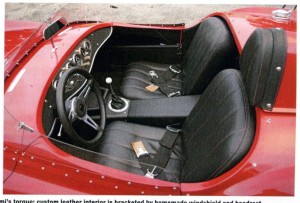 Victress built just the bodies, in a couple of different wheelbases, leaving its customers to choose a frame. However, at least a couple of shops in Southern California–including Mameco and Kurtis–constructed specialty frames to adapt to the growing number of fiberglass sports car bodies on offer at the time.
Victress built just the bodies, in a couple of different wheelbases, leaving its customers to choose a frame. However, at least a couple of shops in Southern California–including Mameco and Kurtis–constructed specialty frames to adapt to the growing number of fiberglass sports car bodies on offer at the time.
Victress continued to produce bodies through 1961, when Boyce-Smith sold the company to LaDawri Coachcraft, another fiberglass body manufacturer. LaDawri continued building the Victress models under different names through 1965.
While most old fiberglass sports car bodies fall to pieces over the years, either from abuse or over-extensive modifications, the Victress S1A body that Steve spotted in El Paso in 2004 still had mold release agent on it. Somebody had cut a hole in the hood for an air cleaner, but it had no floors or bulkheads–other items the customer often had to fabricate when finishing a fiberglass body. “It was a virgin body,” Steve said. “It was still mostly original, just weatherbeaten and old.”
The seller also happened to have a Mameco frame sitting outside the garage, though it had gone through extensive cobbling over the years. Steve struck a deal and took the Victress and Mameco straight to Bob McKee at McKee Engineering in Lake Zurich, Illinois. Bob, famous for 1960s race cars such as the Howmet TX and Hemi McKee (see HMM#15, December 2004), remains in business today building and restoring race cars, so he would have no problem building the Victress to Steve’s concept.
“With the Victress, I wanted a touring car, not a road-race car–I wanted a car that I could drive on the street, but also take on long tours like the Copperstate 1000 or the Colorado Grand,” Steve said. “I wanted something I could get into, start and drive anywhere.”
To that end, he and Bob looked over the fully boxed Mameco frame and decided they could use it after cutting away all the unnecessary brackets and other junk. The Mameco had been set up from the factory for Ford-style transverse leaf-spring suspension front and rear, so they cut away the front crossmember as well.
Up front, they installed a Heidts Engineering crossmember, designed to mount a complete Mustang II-style coil-sprung independent front suspension, Mustang II-style disc brakes, and Mustang II-style rack-and-pinion steering, all of which were also sourced from Heidts. While Steve stuck with a solid axle in the rear–a custom-built Ford 9-inch from Miller’s Rear Gears in St. Louis, Missouri–Bob designed and built a custom four-link suspension with AFCO coil springs and QA1 shock absorbers.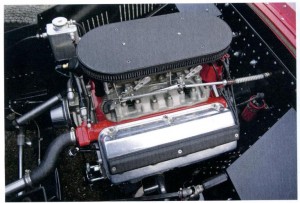
For the drivetrain, Steve wanted to get away from the blue oval parts. “I decided early on that a flathead Ford V-8 wouldn’t make enough power,” he said.
“I love them, and one would be period-correct in this car, but I wanted something else. A Chevrolet small-block would be too common, and I briefly considered a Ford Y-block, but then I got to thinking, ‘What about a Hemi?’
The Victress has a big engine compartment, with plenty of room for a Hemi; it’d still be period correct; there’d be a lot of ‘wow’ factor to it; and I’ve never had a car with a Hemi before.”
Which Hemi, though? A Chrysler Hemi would indeed wow the crowds, but would also weigh down the front of the Victress too much. So Steve instead turned his eye on the smaller 1950s Dodge “baby Hemi,” an evolution of the Dodge Red Ram, and located one under a workbench in Nevada. The KD500 identification number stamped into the engine identified it as a 1957 engine with 325 cubic inches, good for 285 horsepower with its single four-barrel carburetor (a dual-quad version of the KD500 that Dodge also made available that year put out 310 horsepower).
The engine that Steve found remained in decent shape, with a standard-sized bore and crankshaft. Still, he handed it over to Speed Performance Engineering in Wauconda, Illinois, for a full rebuild, though not to stock specifications. He had 9.0:1 compression ratio Arias pistons fitted to H-beam connecting rods intended for a Pontiac (“The stock Dodge Hemi connecting rods aren’t the strongest in the world,” Steve said.) and adjustable pushrods bumped by a Nielson 272H hydraulic camshaft.
He also had a windage tray installed before he topped the engine with an Offenhauser aluminum dual-quad intake manifold and a pair of Carter WCFB carburetors, fed by a Facet electric fuel pump. The Sanderson block-hugger headers dump into a pair of mufflerless sidepipes, constructed of ceramic-coated rectangular tubing.
Behind the KD500, Steve used a lightened flywheel and two-disc clutch from Quarter Master that together weigh just 16 pounds, which he figured is about a third of what the stock flywheel and clutch assembly weigh, and behind that a Tremec TKO600 five-speed manual transmission. However, he said he doesn’t know what he was thinking when he chose the 3.23 gears for the Ford 9-inch. “They’re just too tall,” he said. “In fourth gear at 70 MPH, I’m doing 2,200 RPM. I want to eventually change them out to 3.70s.”
 The Victress body, as pristine as it was, still required a good amount of work to get ready to mount on the chassis. Steve said the fiberglass was very thin, so he and “Skip” McCabe at McCabe Auto Restorations first added more fiberglass to thicken it.
The Victress body, as pristine as it was, still required a good amount of work to get ready to mount on the chassis. Steve said the fiberglass was very thin, so he and “Skip” McCabe at McCabe Auto Restorations first added more fiberglass to thicken it.
He then constructed bulkheads, rear inner fender panels and a trunk out of marine plywood, covered on both sides with more fiberglass, and laid down a floor of quarter-inch fiberglass, molded into the body sides.
Steve and Skip then had to not only cut out the driver’s side door and trunklid, but also construct a surface for them to close against. After filling in the hole in the hood, they molded the hood shut, and reworked the front part of the body to make it all tilt forward as a unit. Inside the grille opening, Ed Brett at McKee fabricated an eggcrate grille out of aluminum, and Russ Olsen at McKee handled additional fabrication.
Steve even had to build his own windshield and dashboard. The former he bent out of 1/8 inch Lexan and extended into the doors; the latter he built out of aluminum. He had Hanesline fabricate the insert, stuffed with Stewart-Warner gauges.
All the finishing touches Steve had to come up with himself, from the 1950 Pontiac taillamps to the tapering headrest. Even the stainless steel Victress nameplates had to be custom-made. “Victress never had badges like that, so I took their script logo from an old brochure and programmed that into a waterjet cutter,” Steve said.
Steve wrapped up the build in 2009, just about 50 years after his father’s Victress build. Rather than take his own Victress road racing, Steve instead uses it as he meant it to be used: on the highway. After 500 miles of shakedown runs that summer, he and his wife, Linda, took it on the Colorado Grand, where he reported that it ran perfectly.
“It’s a neat period car,” he said. “And it’s a good high-speed car. I’ve done 105 with it, and it’s really happy anywhere from 70 to 100 mph. His father would have approved.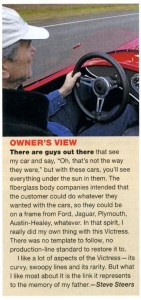
Steve Steers and His Victress Appear at Milwaukee Masterpiece, 2011
Back in August of this year, the Milwaukee Masterpiece Concours d’ Elegance featured the largest gathering of vintage ‘glass sports cars ever to be assembled. We were excited that Steve and his Victress participated in this great event along with other superb sports specials as well. Click on the following two links to see Steve’s Victress in action at the Masterpiece Concours d’ Elegance:
The Cars of the Milwaukee Masterpiece: Steve Steers “Victress S1A Special”
The Cars of the Milwaukee Masterpiece: Merrill Powell From Victress And Steve Steers to the Rescue
Be sure to visit the other links in the stories above to see all ‘glass cars that appeared at the Milwaukee Masterpiece. The cars are stunning representatives of the best of what’s out there gang.
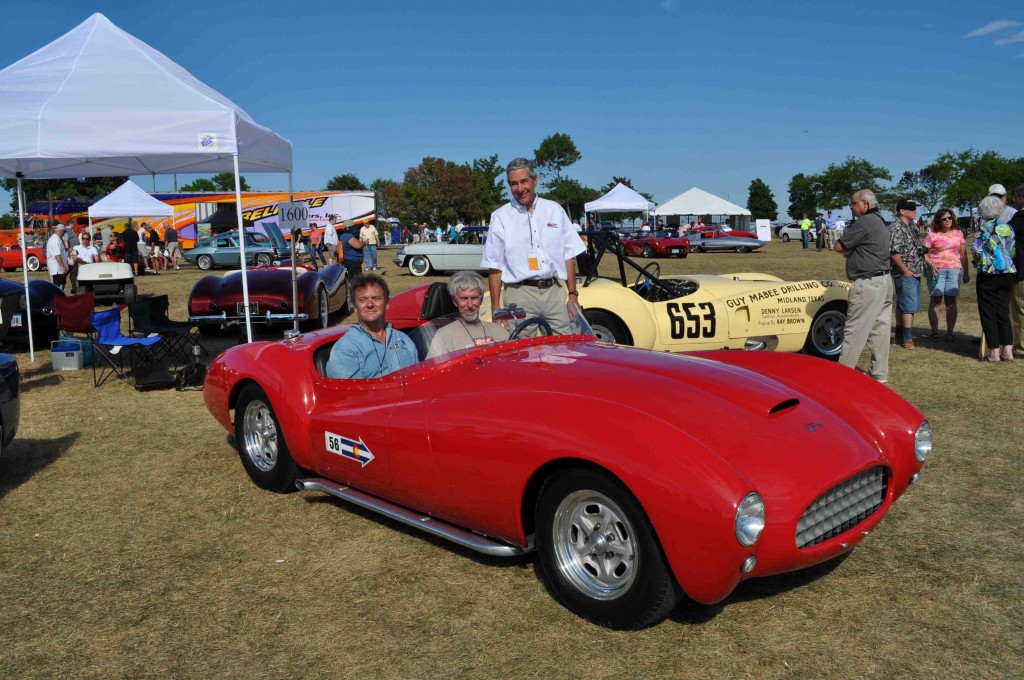
Steve Steers Kindly Allowed Rick D’louhy and Myself To Test Out The Seating in His S1A. We Brought The Car Back the Next Day (just kidding….) Thanks Again Steve!
Summary:
Thanks again to Daniel Strohl of Hemmings Motor News for allowing us to share the complete article on Forgotten Fiberglass. Much appreciated Dan! Click here to visit the original article on the Hemmings Motor News website.
Hope you enjoyed the story, and until next time…
Glass on gang…
Geoff
——————————————————————-
Click on the Images Below to View Larger Pictures
——————————————————————-
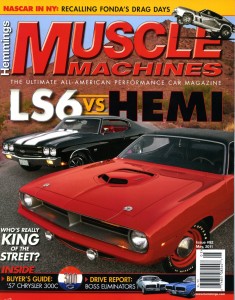
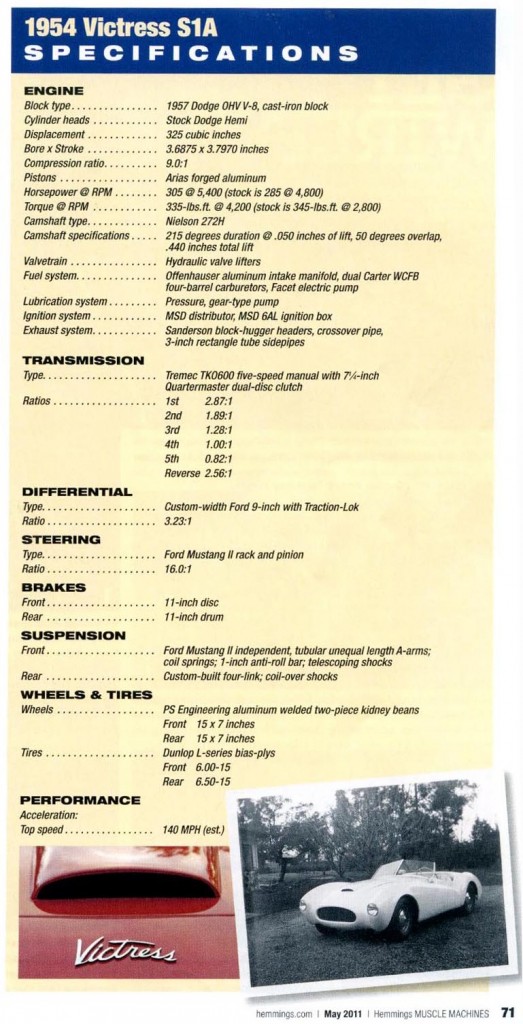
























Steve did a FANTASTIC job rebuilding his Victress…WOW..!!!!!